

Calumet
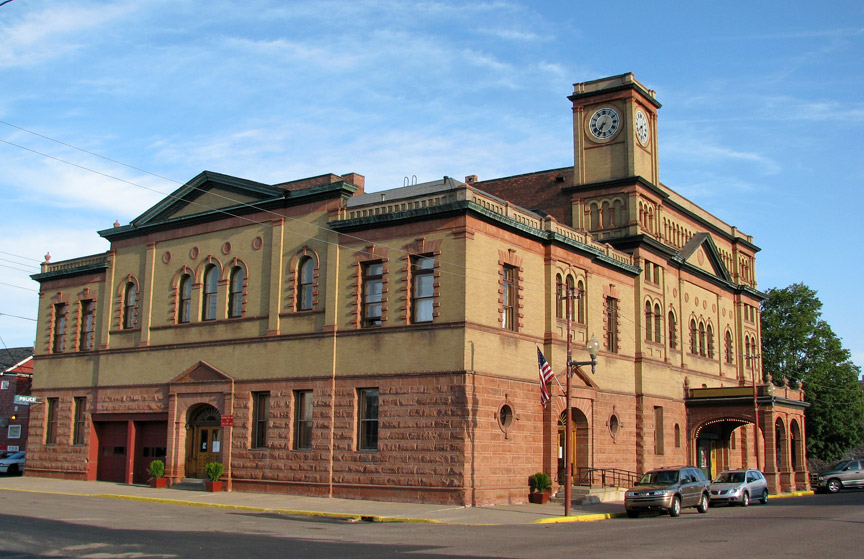
Calumet
Calumet is a village in Calumet Township, Houghton County, in the U.S. state of Michigan's Upper Peninsula, that was once at the center of the mining industry of the Upper Peninsula. The unincorporated towns of Blue Jacket". and Newton border it on the northwest and south respectively. The population was 879 at the 2000 census.
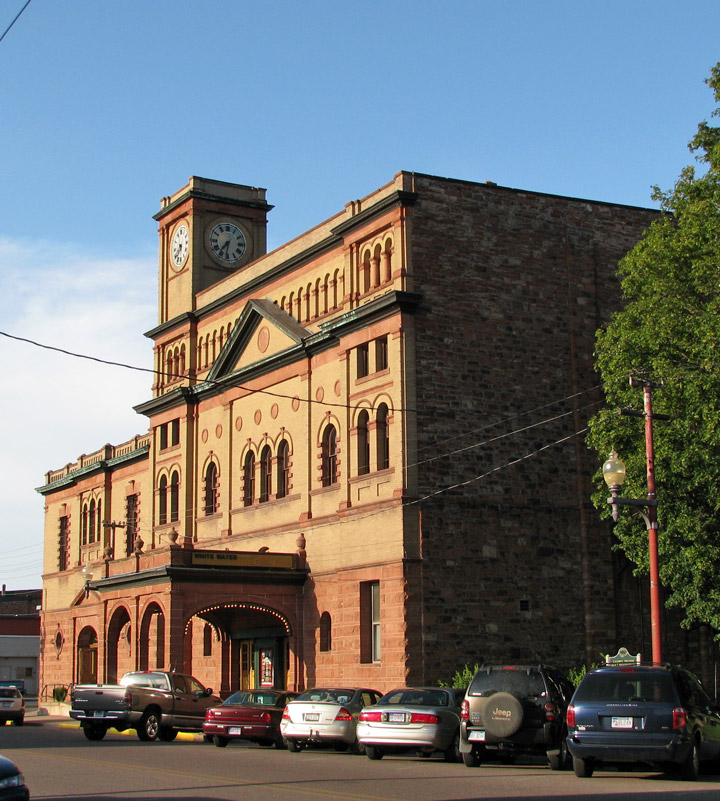
What is now Calumet was settled in 1864, originally under the name of "Red
Jacket", named for a Native American Chief of the Seneca tribe. Until 1895 the
name "Calumet" was used by the nearby town of Laurium, Michigan; present day
Calumet was not legally named so until 1929.
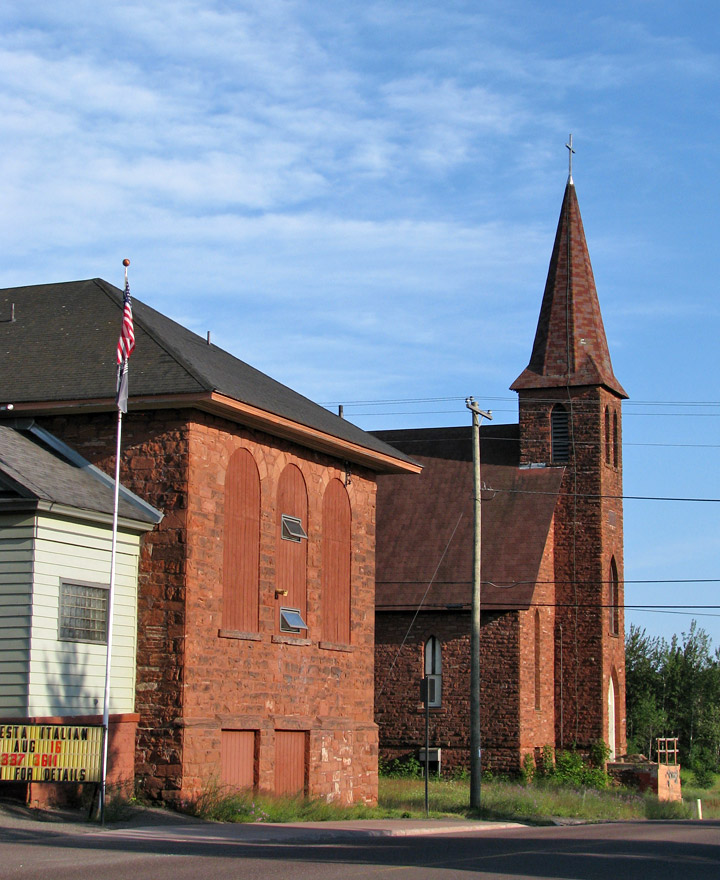
Red Jacket grew due to the copper mines in the area. It was incorporated as a
town in 1867. The copper mines were particularly rich; the Red Jacket-based
Calumet and Hecla Mining Company produced more than half of the USA's copper
from 1871 through 1880. In addition to copper mining and smelting, the region
also supported the dairy industry and truck farming.
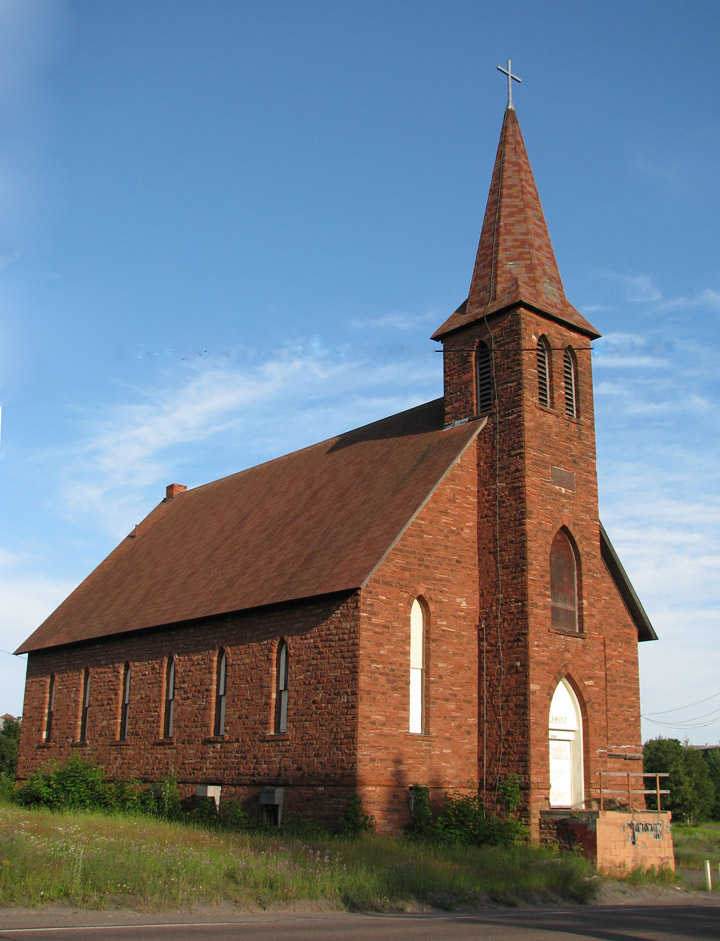
By 1900, Red Jacket had a population of 4,668, and Calumet Township, which
contained Red Jacket and nearby mining towns, had a population of 25,991.
However, in 1913, Red Jacket suffered from mining labor strikes, and the
population began to decline. 2000 census data gives 36,016 for the entire
county. In the same year, the town was the site of the Italian Hall Disaster.
Striking miners and their families were gathered on Christmas Eve for a party in
Italian Hall, when the cry of "fire" precipitated a stampede that crushed or
suffocated seventy-five victims, the majority of them children. The identity of
the person(s) who started the stampede has never been determined. Folk singer
Woody Guthrie's song, "1913 Massacre", is based on this event.
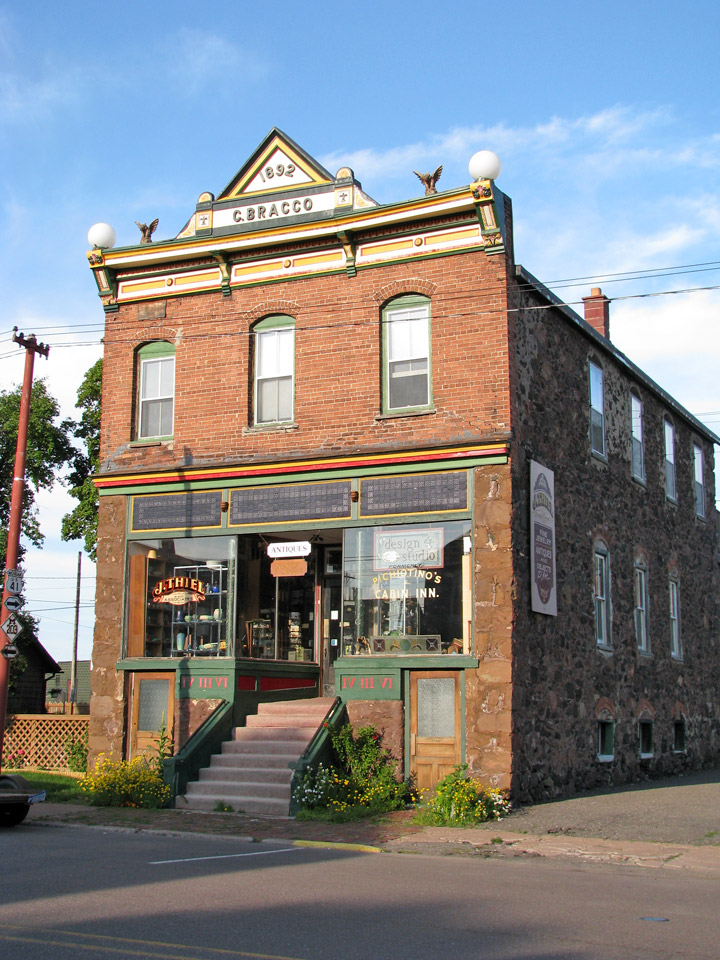
Loss of wartime demand caused the copper price to drop following World War I.
With the decreased demand for copper, thousands left Red Jacket in the 1920s,
many moving to Detroit, Michigan where the automobile industry was booming.
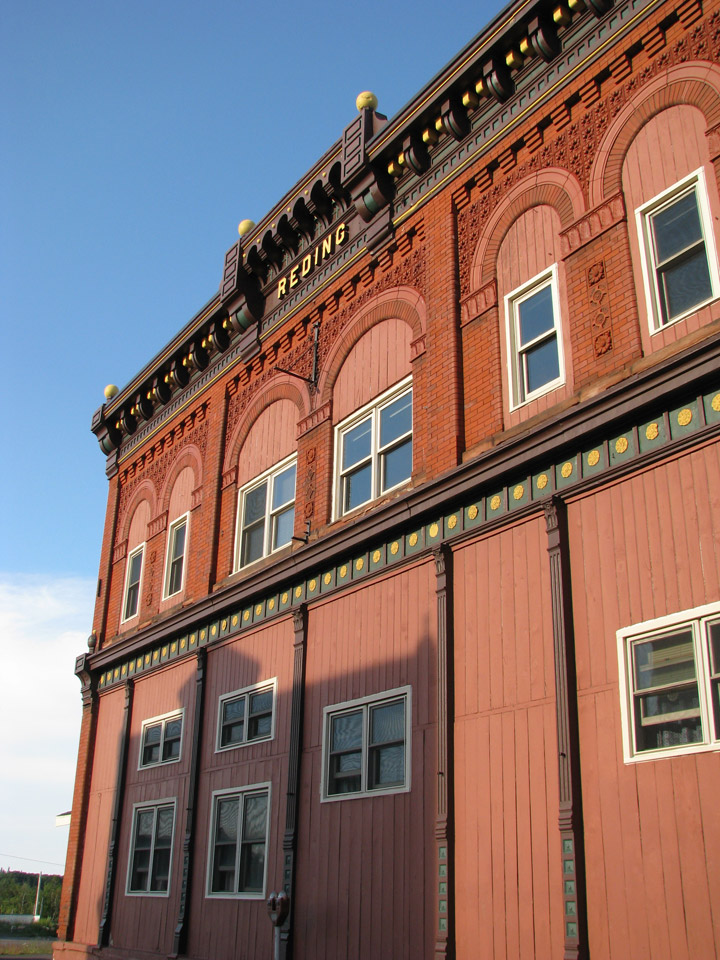
In 1929, Red Jacket and surrounding company towns including "Laurium, Hecla, and
South Hecla" were reincorporated as the town of "Calumet". To be even more
confusing, the area once officially known as Calumet was then re-named to
Laurium.
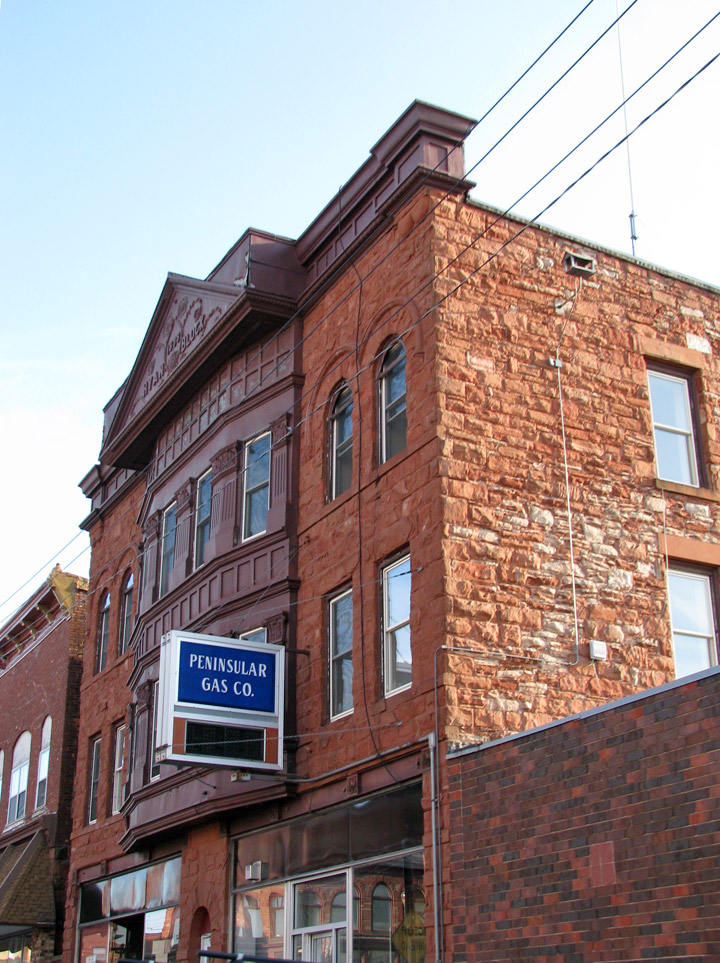
During the Great Depression, almost all mines were shut down. As a result, many
miners and their families left to find work. In 1950, the population of Calumet
was 1,256 people. Small-time mining continued in the area, particularly during
World War II until it was shut down completely by a labor strike in 1968.
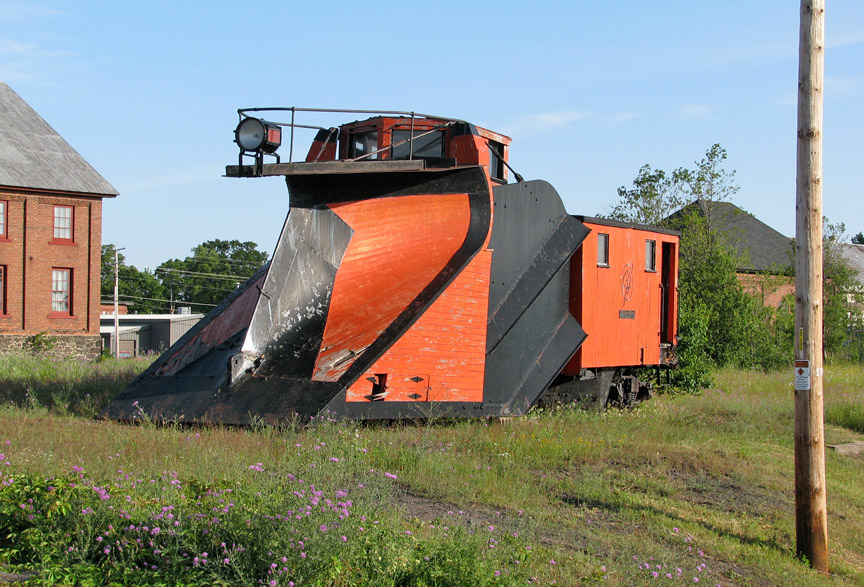
to manage the large snowfalls
According to the United States Census Bureau, the village has a total area of 0.2 square miles (0.5 kmē), all land.
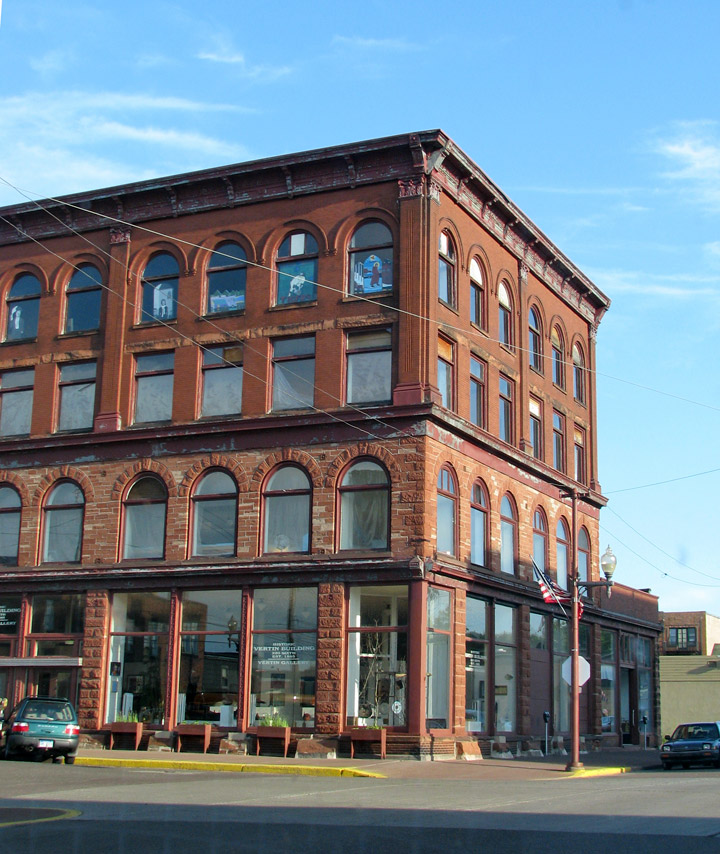
Calumet is at an elevation of 1,209 feet above sea level.
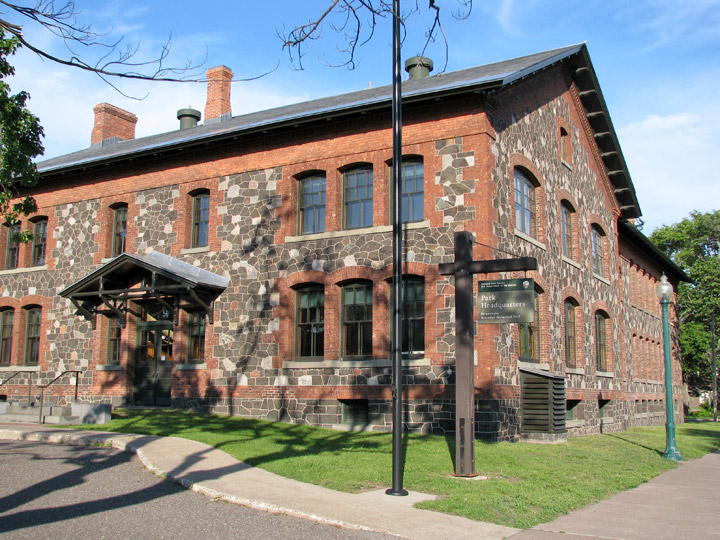
Park Headquarters of Keweenaw National Historical Park
Parts of the Keweenaw National Historical Park are located inside the village limits.
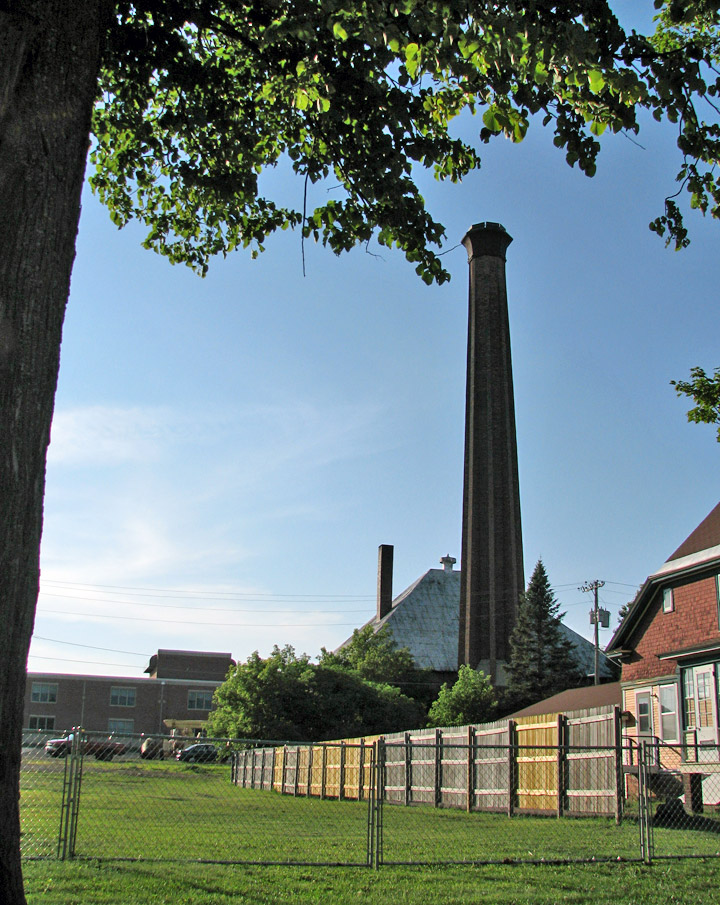
mill stack
The village of Calumet now sits on over 2,000 miles of underground mine shafts, drifts and stopes, all empty since 1968. As the geology of the area matures, it can be expected that some areas of the village could be susceptible to "caving" or sink holes as the old stopes near surface move and cause the surface to depress, in particular areas located near the oldest workings.

Calumet & Hecla Copper Mining Company building
There is no current interest in re-opening these old mines, however with world copper prices reaching over $2 per pound in December 2005 hope of dewatering these mines was regenerated, especially the largest vertical shaft, the Red Jacket mine, located just west of Calumet. In summer 2003, mine site remediation work on the old Calumet and Hecla #17 shaft, located at US41 and M203, indicated shaft stability, water levels and quality to be consistent with historical interpretations. This has given promise to the condition of the shafts in surrounding vicinities.
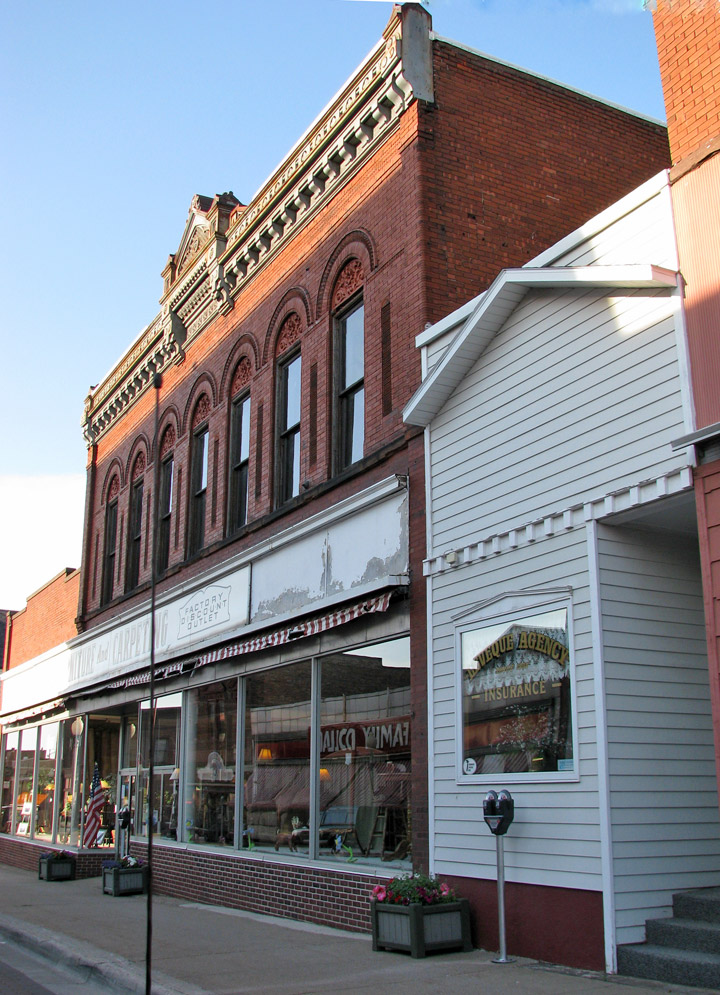
One of the biggest parts of the culture of not only Calumet, but the entire
Copper Country is the pasty. This was a main part of copper miners' diets. A
pasty is a mixture of meat, potatoes, rutabaga, carrots and onions wrapped in a
crust made of flour and lard. Traditionally Cornish, they have even sparked
local events such as the Pasty Fest, where there are eating contests (with
consumption of pasties, of course), games, events, and even a tug of war event
where the losers take a dive into an inflatable pool filled with ketchup.
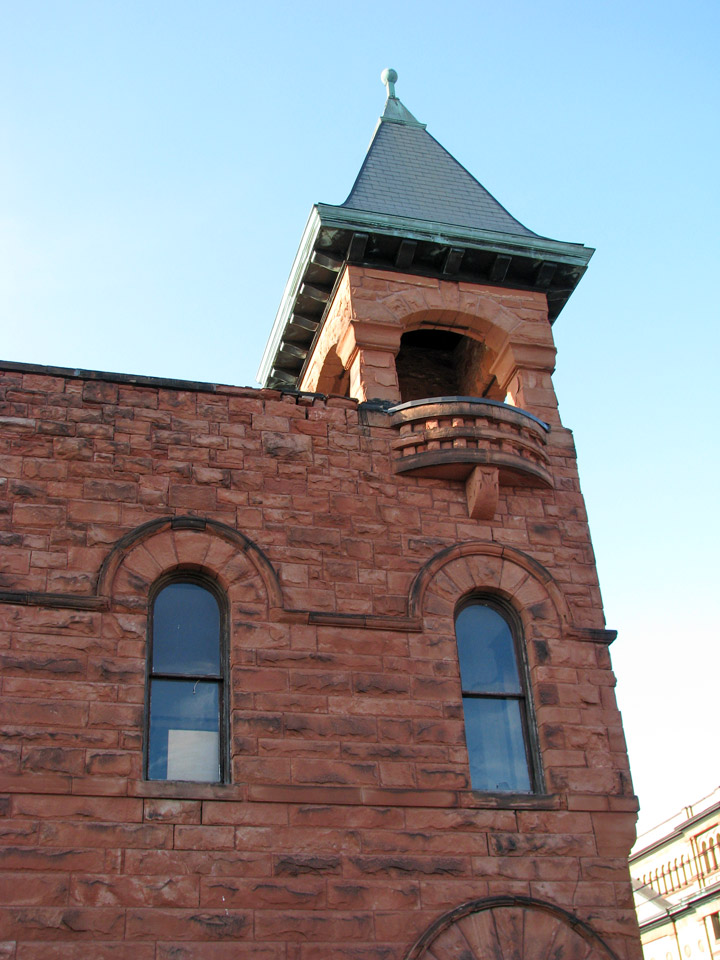
The Calumet Theatre is a theater and opera house which was constructed in 1900.
In 1898, the copper mining industry was booming, and the town had an enormous
surplus in its treasury. The town council decided to spend some of the surplus
on a theater. The theater hosted a large number of famous actors, musicians, and
opera singers. With the close of the mines, the theater became a movie
theater and fell into general disrepair for many years. In 1975, the town began
a large project to repair and restore the theater, which is now used for many
local and touring productions. The theatre is a National Historic Landmark.
Text from Wikipedia
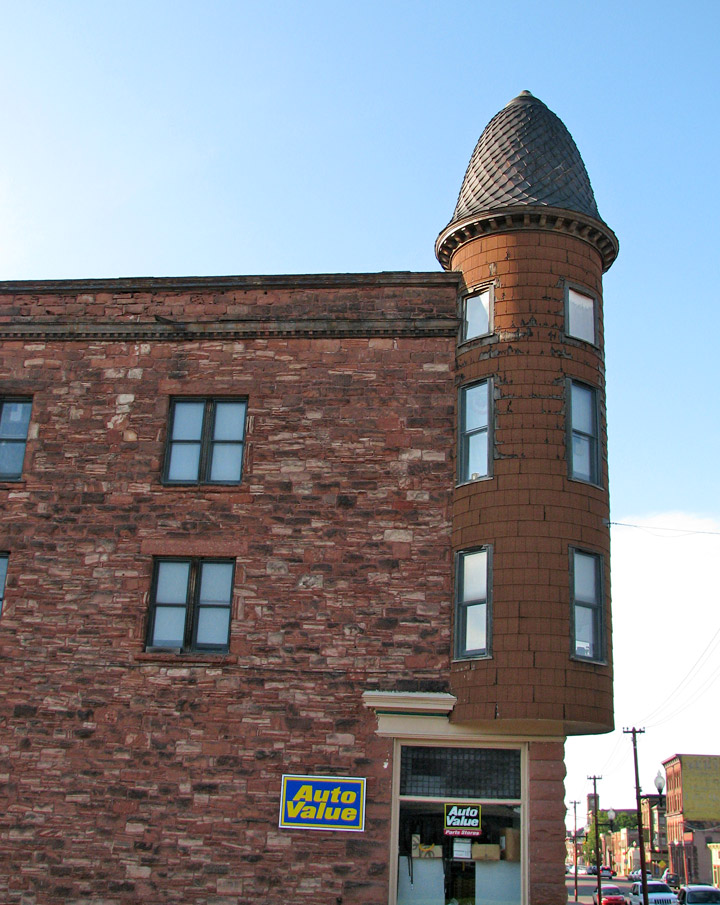
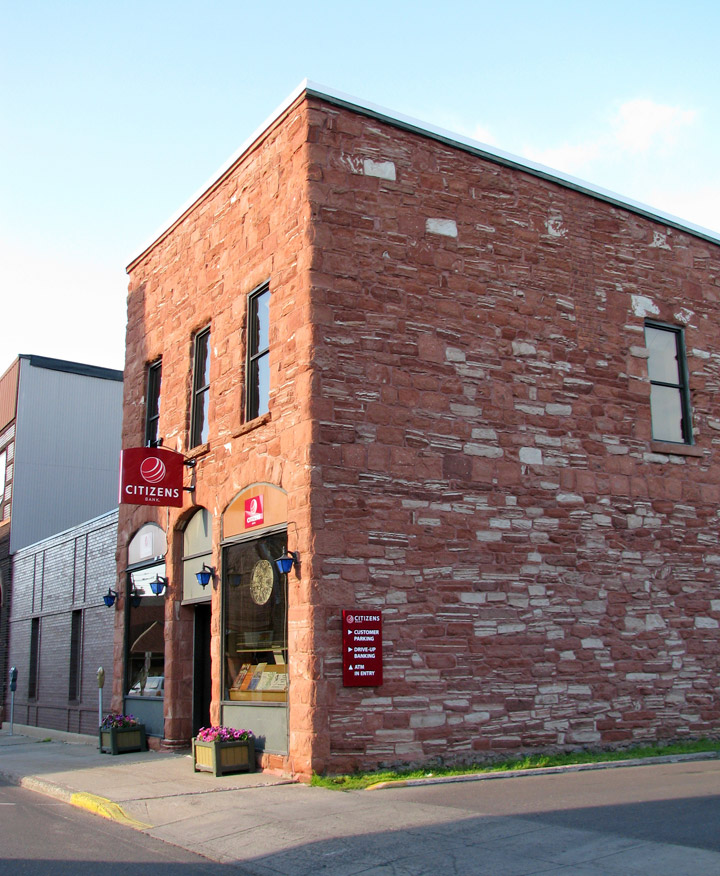
presently a bank
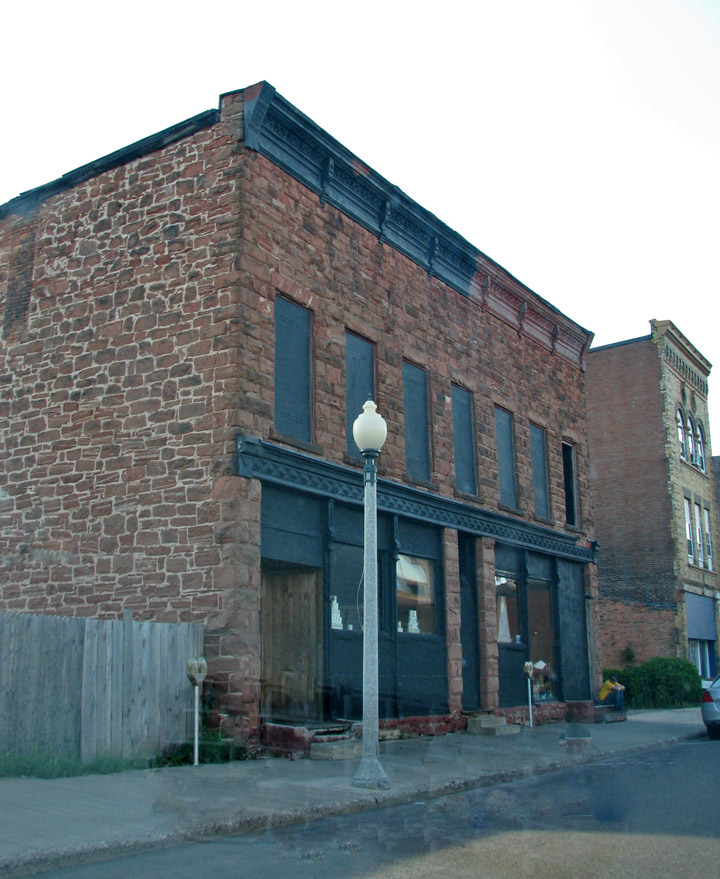
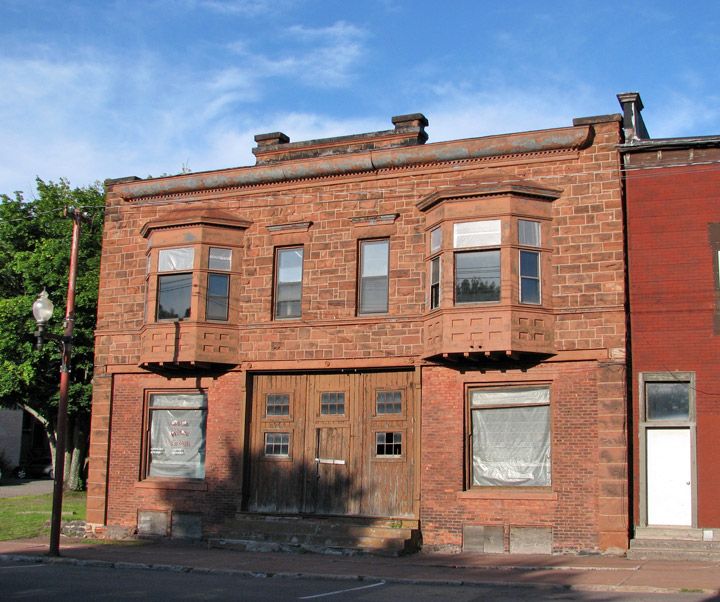
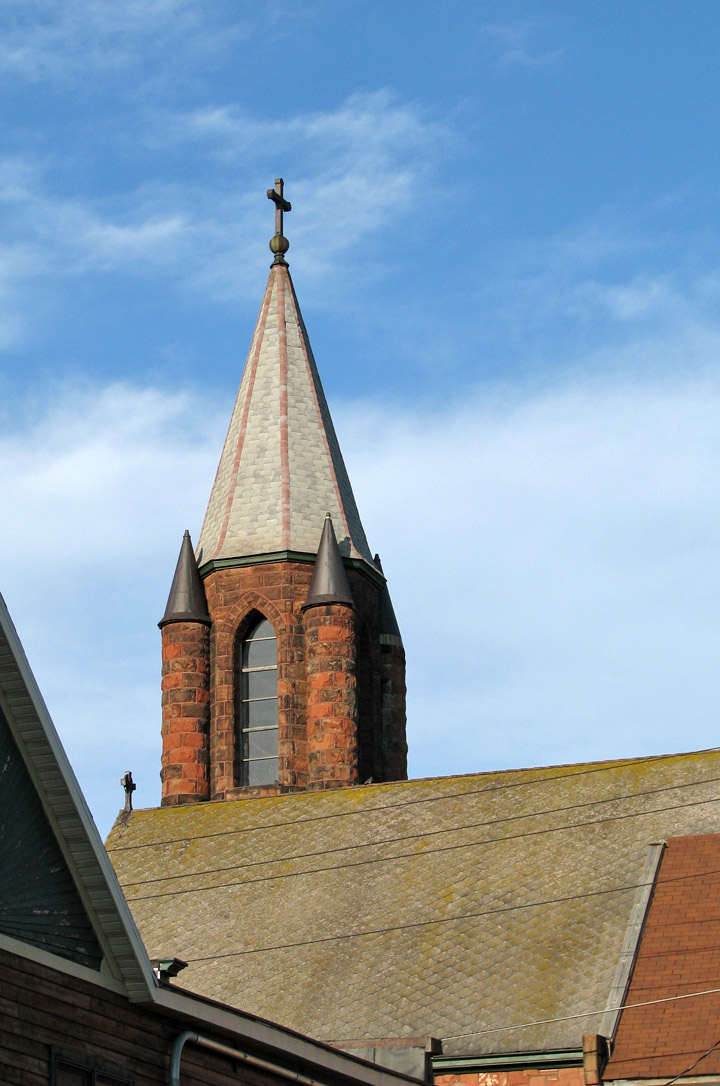


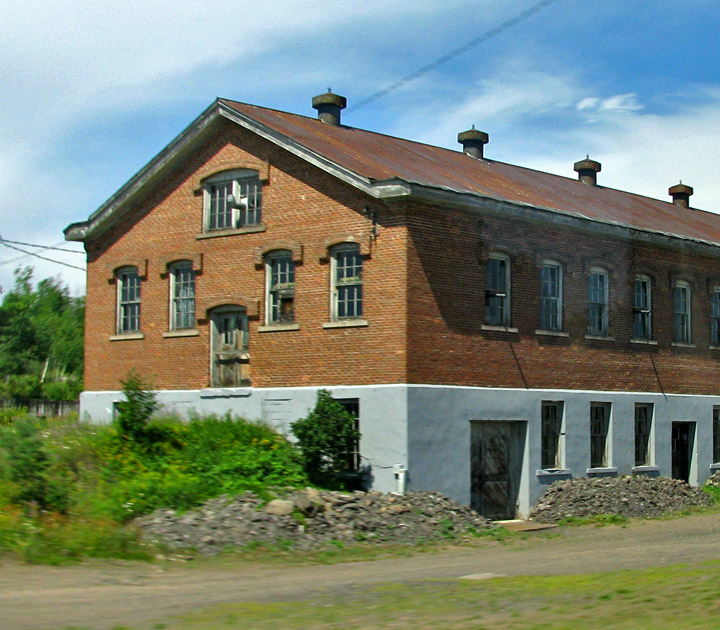
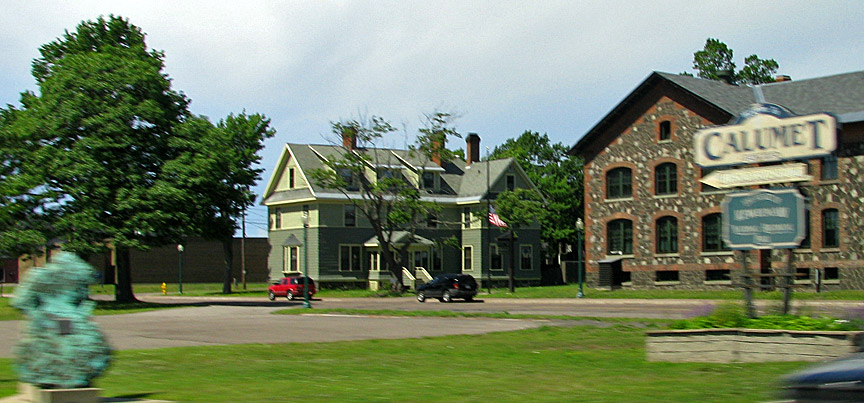
town entrance from the highway